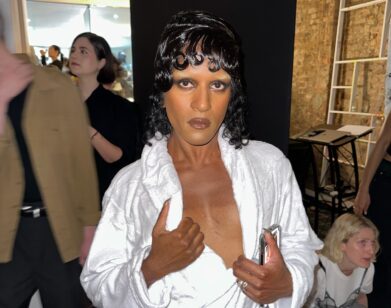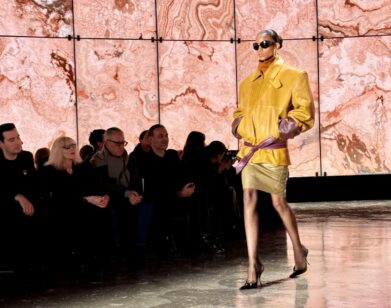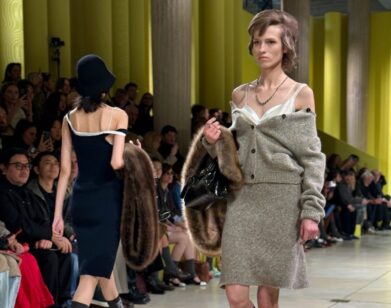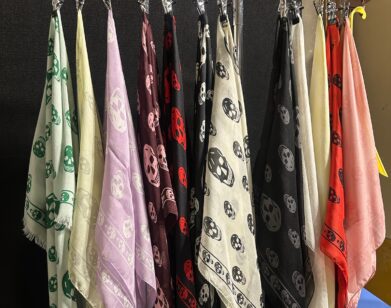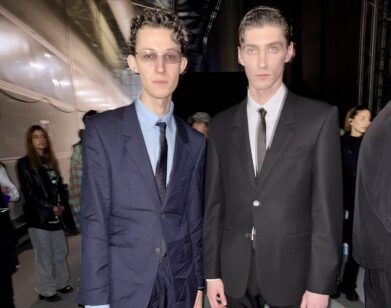KYLE HAGLER
You will never know why you got the job or why you didn’t. The choice could be based on an experience the casting director had as a child. It could be based on movie they saw or a book they read. Kyle HagleR
DAVID COLMAN: How did you end up in New York?
KYLE HAGLER: I was born in Orange, New Jersey, to a single mom who was going to med school while I was growing up. It was not a fashion environment at all. But I was drawn to fashion—hyper-interested in models and what they were doing. At that time, it was Naomi, Linda, Beverly Peele, Christy Turlington, Stephanie Seymour … There was a lot of televised presence of fashion and models and House of Style. I would go to the city and sneak into nightclubs in high school, to places like the Sound Factory. So at any given moment, you’d be on a dance floor and Madonna would be behind you in an Adidas dress. After high school, I did the responsible thing—I went to college. I went to Morehouse College in Atlanta, a historically black college, and I was asked to be a part of the fashion section of a college magazine. I did it because I thought it would be fun, but I took it more seriously than I think I needed to. I flew on my own dime to New York and asked for meetings at advertising agencies and talked about changing the paper quality and hiring models for random photo shoots. This was for a small college magazine! I dealt a lot with Elite in Atlanta. But then they killed the fashion section.
COLMAN: So you kept going in fashion after that?
HAGLER: All through college, the goal was to become an entertainment attorney. Then I realized in my senior year that I hadn’t taken an LSAT or applied to law school or done anything in the way of moving into law. But because I was majoring in business management, I realized I could actually pair that skill with the business of model management. So I went to New York to meet with different agencies and landed at IMG. That was ’96. Ivan [Bart] was actually the guy I was told to meet. He was the new guy at IMG, and he was shaking things up and making things happen. I met with him, and after a couple of hours, he said, “We would love for you to start here in two weeks.” I accepted on the spot.
COLMAN: What did you start doing there? Who were the girls you were working with?
HAGLER: After about six months, I was moved to their development board, where I found myself on scouting trips around the country every weekend looking for new talent and managing brand-new girls, getting them off the ground. I took it very seriously and Ivan wanted to promote me to the main board, for the full-fledged working models, but I turned them down. He looked at me like I had seven heads. [laughs] But I thought I would be selling out and would lose my edge. Ivan pulled me aside and said, “The reality is that you can develop talent any way. You can develop established talents and make the world see them in new and different ways, creating new opportunities for them.” It took about a week of convincing, but I got it. Shortly thereafter, I started working with Tyra Banks, who at the time was the highest paid Victoria’s Secret model, and then Heidi Klum. I met Liya Kebede and we hit it off and starting working together to develop her career. So it went from there.
COLMAN: In what phase was Heidi Klum in her career when you started working with her?
HAGLER: I started working with her after she had appeared on the Sports Illustrated cover in 1998. She was like the new kind of bombshell, a big commercial success. But that wasn’t what Heidi wanted. The reason Heidi has been so successful is that she has always been super-driven and pushed the boundaries. She really wanted to explore the high-fashion realm, and at that time, if you were on Sports Illustrated, you did commercial things and never delved into other spaces. We started to work together, and she started to do interesting projects with fantastic high-fashion photographers and magazines. The conversation changed about Heidi. That’s when I really started to see how you could develop a talent in different ways even if they had an established profile.
COLMAN: What about Liya Kebede?
HAGLER: Liya also came from a commercial space—not as high of a level as Heidi, but she wanted to try for more. So we introduced her to Vogue. Steven Meisel was hugely supportive of her, and Tom Ford started to use her in advertising. You did not see a lot of women of color at that moment in fashion and advertising, so that conversation changed. And then we created the alignment between her and Estée Lauder. She was the first woman of color to represent the brand.
COLMAN: What have been some of your favorite moments in the business over the last 10 years?
HAGLER: I would say launching careers like Hilary Rhoda’s. Hilary wanted to be perceived differently, so adjusting her style and how she presented herself, watching people change in their opinion about her and then incorporate her into the high-fashion conversation has been really great. Joan Smalls has also been fun. It’s great to be with people who are fearless and just want to jump in and have a good time.
For more model agents, click here.

